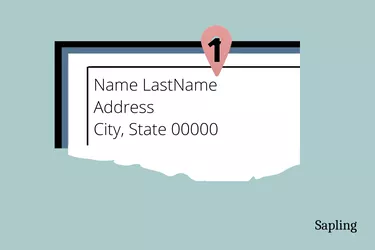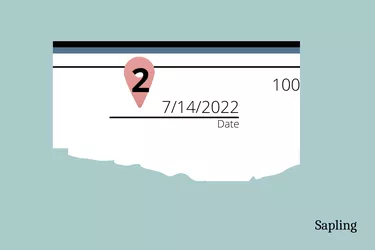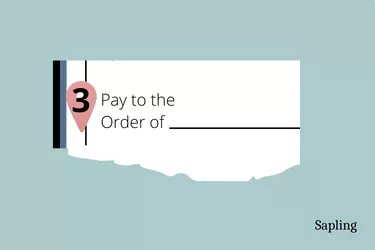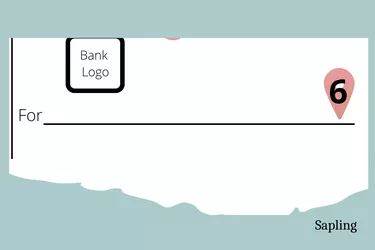
Although paper checks are not common in today's personal finance, there are times when we still need to write checks. That Girl Scout selling thin mints might not take a debit card or even any credit cards. And most people don't carry cash around. You'll have to pull out your checkbook. So, an understanding of check-writing to use the check is imperative.
It's often confusing when writing the amount on the check when there isn't any change. At that point, you'll need to write a whole number and designate zero cents. Where and how do you do that?
Video of the Day
Video of the Day
Full Name and Address

First, find where you write the amount of money. The layout of a check is simple. It starts with your full name and address in the top left corner. This is designated as number one on the corner of the check on the diagram.
Check Number and Current Date

When writing a personal check, take note of the check number in the right corner. You want to make sure, for organizational purposes, that you write every personal check in numerical order.
Make sure you write the current date on the date line located below the check number and number two on the check diagram.
Designate a Payee on Check

You'll notice a line midway down the check that starts with "Pay to the order of." It's number three on the check diagram. This is the payee or name of the person you are writing the check to.
Numerical Amount in Dollar Box

The numerical amount of money you'll be writing out goes in the elongated box with a dollar sign in front of it, on the right side of the check. It's next to the "Pay to the order of" line and number four on the check diagram. This is the dollar box and where you enter the numbers for the amount of the check.
If you bought two boxes of cookies from that Girl Scout and had to write a check, you would write the amount in the dollar box. The numerical amount would be $12. But you would enter the amount of the check as $12.00. The two zeros would designate the zero cents. That decimal point must be there. If you don't have a decimal point the bank may think you mean $1,200.
It's very important that you fill in the numerical amount correctly. By adding the zero cents, you've made it clear exactly what the amount of the check is.
It isn't necessary to write the dollar sign in the dollar box because it's already printed on the check.
Write Out Amount of Money

Once you've written out the numerical amount in the dollar box, it's time to write out the dollar amount in words. This is to verify the amount of money you've written in the dollar box.
The dollars line is located beneath the "Pay to the order of" line and is number five on the check diagram. It's a long line that runs across the check from side to side. The word "dollars" is on the right side of the line.
Write the dollar amount out. You don't need to write the word dollars. It's already printed on the check. Write the word "twelve" on the left side, then draw a line across the check from the written number. Leave space at the end on the right-hand side for your cents. You'll be entering a zero cents notation there. The zero cents notation should be written as a fraction. Write 00/100 – this means zero out of one hundred cents.
Another way to write this is XX/100. You may even write out the words "zero cents' if you wish. Writing out the amount of money corresponds with the numerical amount and helps secure your checking account.
After you have written this information it's time to finish.
Signature Line and Memo Line

You'll need to sign-off on the amount of money you've just written by signing your name at the bottom of the check. You'll find the signature line at the bottom right-hand corner. It's number seven on the check diagram.

The memo line at the bottom left of the check is to reference why the check was made out. The memo line is located at number six on the check diagram.
For instance, you might want to put "Girl Scout Cookies" on the memo line of this check.